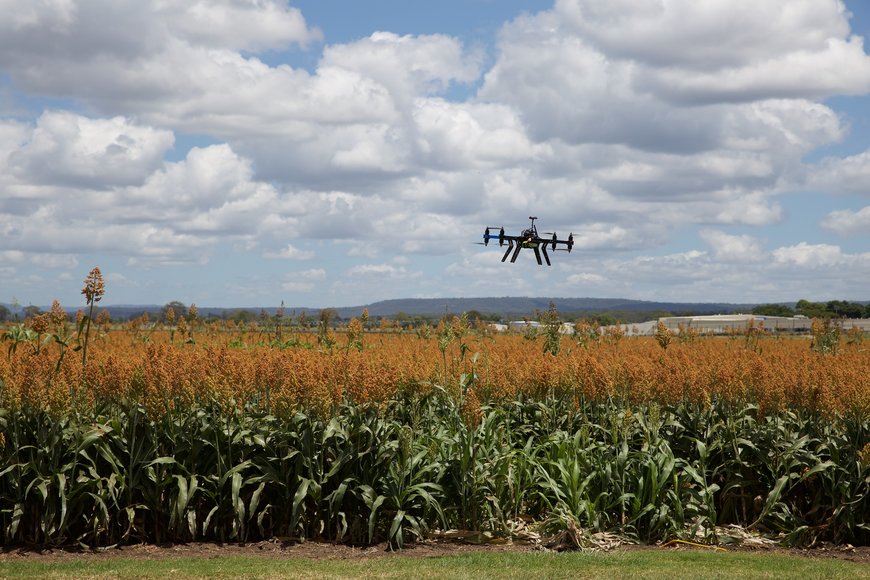www.industry-asia-pacific.com
14
'21
Written on Modified on
Maxon Motor News
Driving the transition to Agriculture 4.0
Robotics to keep farming efficient and productive. If the global population reaches ten billion by 2050, farmers across the globe will need to increase their product yield by 70 per cent.

With resources depleting, a growing climate change crisis and labour shortages, many people are questioning if we are equipped to handle future food production. Here Martin Leahy, sales engineer at precision drives specialist maxon UK and Ireland, discusses some of the major challenges facing modern agriculture and explores how advancement in technologies can help resolve them.
Agriculture 4.0 represents the anticipated changes in farming due to the discovery of new technologies. This includes introducing Artificial Intelligence (AI) to make planning decisions and powering autonomous machines to carry out harvesting, weeding and distributing chemical fertilisers.
Farmers are often perceived as risk adverse and reluctant to invest in new, capital-intensive technologies. However, agriculture has become the third largest market for professional robotics. Let’s take a look at some of the novel technologies in question, and how they can be used to drive the next agricultural revolution.
Automated Guided Vehicles
Introduced in 1950s, autonomous guided vehicles (AGVs) have been used in logistics and industry to tow raw materials around a given space without the need for human intervention. Commonly, AGVs run off a wire-guidance system by following a plotted path of wave-emitting wires in the ground, much like a train track.
The problem is wire-guidance systems are very rigid, costly and complex to install. The alternative opti-guidance system — where AGVs use cameras to follow a fixed painted line — may be the more cost-effective solution.
While AGVs can detect obstacles in their running path, they can’t yet operate around them. Therefore, AGVs are best used in straight-line indoor or vertical agriculture and will save on the time and labour costs associated with carrying out manual jobs like seeding and fertilising.
Autonomous mobile robots in field robotics
Autonomous mobile robots (AMRs) are more flexible and don’t require the large infrastructural costs associated with AGVs. In a LIDAR or laser-guidance system, AMRs are equipped with rotating lasers and move via a network of reflectors integrated into the environment. Alternatively, farmers might use geo-guidance systems to move their AMR, whereby the robot can calculate its path using a pre-programmed map of a facility or field.
LIDAR systems are the most reliable technology for AMRs, but they do require some level of infrastructure development. Geo-guidance systems, though not as robust, are quick to configure and are easy to reprogram.
AMRs, using brushless DC motors, are being used in field robotics to carry out the previously mundane and time-consuming tasks like planting, spraying, harvesting and soil sampling. Because automated processes are highly repeatable and time efficient, AMRs will ensure better task accuracy, improved productivity and less need for manual labour.
Unmanned Aerial Vehicles and AgriDrones
Unmanned aerial vehicles (UAVs) and drones are showing great promise in farming for providing aerial imagery and real-time data on crop conditions. Utilising drones for generating aerial imagery and real time data on crop health, this has the potential to reduce chemical and water consumption. Selective spraying techniques instead of blanket spraying not only has economic benefits but environmental benefits too.
Demonstrating UAV potential, The Hill Farmers Association in Ireland is using drones to perform headcounts, monitor flock integrity and herd sheep. This has led to the association requesting that drones be included in the Targeted Agriculture Modernisation (TAMs) fund, which will give farmers 40 per cent towards the costs of purchasing UAVs.
For many years, maxon has worked hard to cater for the drive requirements of UAVs, providing payload mechanisms, drone motors, control surface actuators, gearheads and even propellors.
In an era where farmers are faced with labour shortages, a temperamental climate, fewer younger recruits and an ever-increasing population, maxon is here to help provide the technology needed to meet these challenges head on.
www.maxongroup.com

